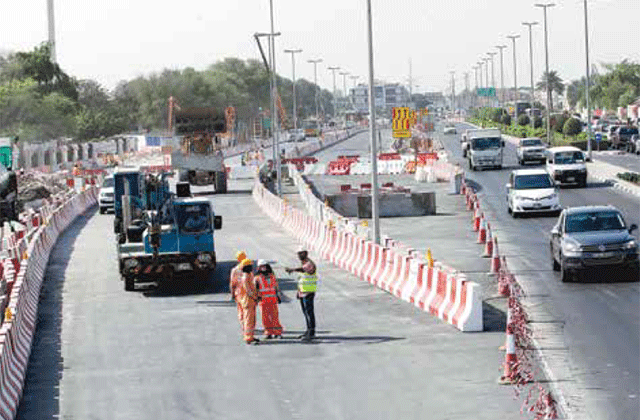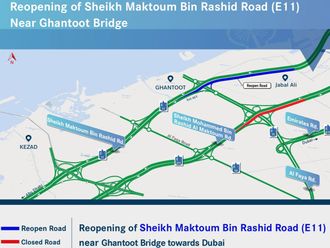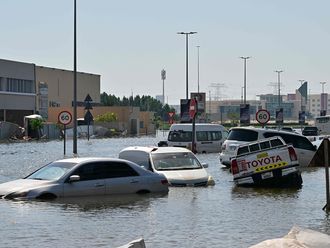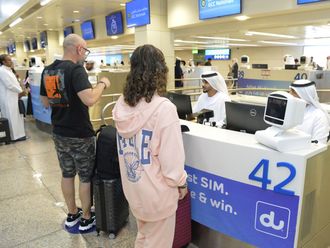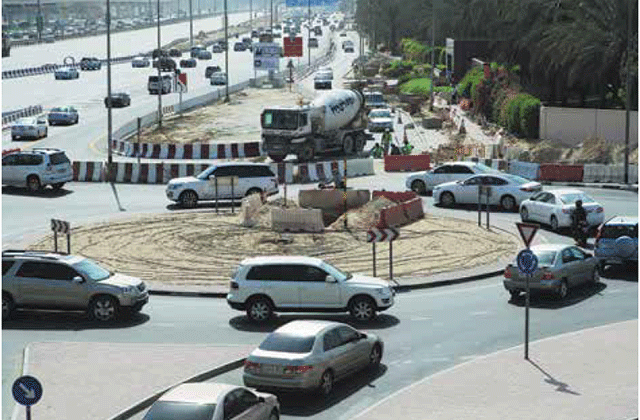
Dubai: Traffic is flowing again after two major diversions for the Dubai Canal project opened
within a week of each other, easing pressure on byroads.
On Friday, the Al Wasl Road diversion opened after traffic was diverted on Shaikh
Zayed Road last weekend.
The original number of lanes has been maintained in both diversions to avoid lane mergers that would have caused bottlenecks.
The diversions have been prepared to allow for work on the Dh2 billion-Dubai Canal
project, which will connect a waterway in Business Bay — already stretched from Dubai Creek — back into the sea.
The man-made canal, expected to be ready in 2016, will cut across Shaikh Zayed Road, Safa Park, Al Wasl Road, and Jumeirah Beach Road before
opening into the coastline.
The Roads and Transport Authority (RTA) has also partly reopened the Umm Amara exit (also known as Shaikh Zayed Collector Road) to Shaikh Zayed Road. It is the only exit in the locality connecting to one of Dubai’s busiest roads.
The closure earlier this year had caused traffic to be diverted to Umm Amara Street,
creating peak hour jams for motorists joining Shaikh Zayed Road.
Now, drivers can re-join Shaikh Zayed Road by making a U-turn at the end of the collector road and merging into the diversion there.
This means there is less stress on Umm Amara Street as motorists again have the option to take the south-to-north collector road instead.
As a result, a bottleneck at a small roundabout near the exit has all but cleared.
Umm Amara Street
Traffic flow from Shaikh Zayed Road to Umm Amara Street on the same exit was not impacted by the diversion works.
However, the collector road in the direction of Abu Dhabi remains closed.
The Shaikh Zayed Road diversion will allow work to start on the construction of a 16-lane flyover, part of the Dubai Canal project.
The diversion stretches for just under a kilometre from Business Bay Metro Station to Interchange Two, diverting the traffic in the direction of Abu Dhabi.
The 800-metre flyover will be built in two parts — and to ensure minimum disruption to traffic, the diversion also has two parts.
The second part of the diversion will be implemented by the second week of November, with traffic from the other direction — from Abu Dhabi — also diverted westwards.
Construction on the first part of the flyover towards the direction of Dubai will begin
shortly, allowing Shaikh Zayed Road to be raised up to eight metres high, making way for the 3.2km canal to flow underneath.
The flyover is expected to be ready by 2016, along with a four-lane flyover on Al Wasl road and six-lane flyover on Jumeirah Beach road.
No disruptions
Meanwhile, no major disruptions occurred as the RTA prepared the Al Wasl diversion, which lasts for about 500 metres. Traffic will be able to move freely in both directions, the RTA has promised.
The diversion is fitted with traffic signals and directions, caution lights and concrete barriers.
Construction of a bridge on Al Wasl Road in the direction of Abu Dhabi will start once traffic shifts fully into the diversion, Maitha Bin Udai, CEO of the RTA’s Traffic and Roads Agency, had said earlier.
Work on the canal project is divided into three phases: the first includes the construction of bridges across the canal on Shaikh Zayed Road.
Phase two includes the construction of bridges on Jumeirah Road and Al Wasl Road.
Phase three mainly covers drilling of the 3.2km-long canal, as well as constructing
three footbridges, among other facilities.
The canal project was launched in late 2013.


